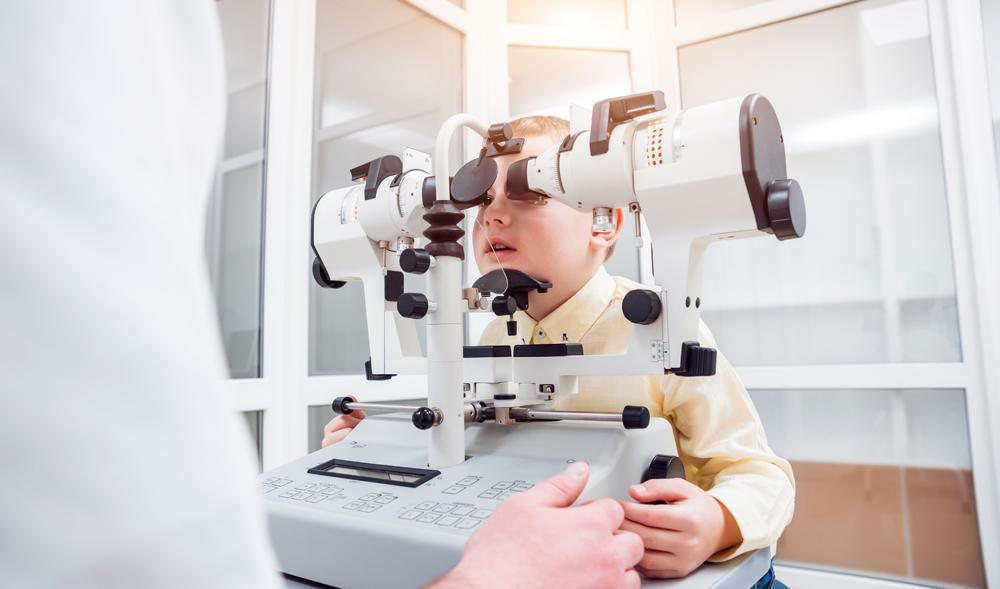Neighborhood Glaucoma Service Near Me: Trusted Experts for Eye Wellness
Neighborhood Glaucoma Service Near Me: Trusted Experts for Eye Wellness
Blog Article
The Role of Advanced Diagnostic Tools in Identifying Eye Disorders
In the world of ophthalmology, the application of sophisticated diagnostic tools has revolutionized the very early recognition and administration of numerous eye conditions. From detecting refined modifications in the optic nerve to keeping an eye on the development of retinal illness, these innovations play a critical function in boosting the accuracy and performance of detecting eye problems. As the need for precise and timely diagnoses continues to grow, the assimilation of advanced tools like optical coherence tomography and visual field testing has actually ended up being essential in the world of eye care. The detailed interaction in between innovation and ocular techniques not just clarifies intricate pathologies yet also opens doors to tailored treatment approaches.
Importance of Very Early Medical Diagnosis
Very early medical diagnosis plays a pivotal role in the reliable management and therapy of eye conditions. Prompt identification of eye problems is vital as it permits for timely treatment, potentially protecting against additional progression of the illness and minimizing lasting complications. By spotting eye disorders at a beginning, doctor can supply appropriate therapy plans tailored to the particular problem, inevitably bring about far better outcomes for clients. Furthermore, very early diagnosis makes it possible for clients to gain access to necessary assistance services and sources earlier, enhancing their overall top quality of life.

Modern Technology for Spotting Glaucoma
Cutting-edge analysis innovations play a vital duty in the early detection and tracking of glaucoma, a leading cause of irreversible loss of sight worldwide. One more sophisticated device is visual field screening, which maps the level of sensitivity of a patient's aesthetic area, assisting to spot any locations of vision loss feature of glaucoma. These sophisticated diagnostic tools enable ophthalmologists to diagnose glaucoma in its early phases, allowing for prompt intervention and much better management of the disease to protect against vision loss.
Role of Optical Coherence Tomography

OCT's capability to measure retinal nerve fiber layer density permits exact and objective measurements, helping in the early detection of glaucoma also prior to visual area problems emerge. OCT technology allows longitudinal surveillance of structural modifications over time, helping with customized treatment plans and timely treatments to help preserve individuals' vision. The non-invasive nature of OCT imaging additionally makes it a favored choice for keeping track of glaucoma progression, as it can be duplicated frequently without triggering discomfort to the person. Generally, OCT plays an important role in improving the diagnostic precision and administration of glaucoma, inevitably adding to much better results for individuals in jeopardy of vision loss.
Enhancing Diagnosis With Visual Field Testing
An important component in comprehensive sensory evaluations, visual area screening plays a crucial function in enhancing the diagnostic procedure for different eye disorders. By analyzing the full level of a person's aesthetic field, this examination provides critical information concerning the functional honesty of the whole aesthetic pathway, from the retina to the aesthetic cortex.
Aesthetic field testing is particularly valuable in the medical diagnosis and administration of conditions such as glaucoma, optic nerve problems, and numerous neurological conditions that can affect vision. Via quantitative dimensions of peripheral and main vision, clinicians can identify subtle modifications that may suggest the existence or development of these disorders, even prior to visible symptoms happen.
Furthermore, visual area testing enables the monitoring of therapy efficiency, assisting ophthalmologists customize therapeutic interventions to individual clients. eyecare near Clicking Here me. By tracking changes in visual field performance over time, healthcare service providers can make educated decisions concerning readjusting medicines, suggesting surgical treatments, or executing other proper measures to preserve or enhance a person's aesthetic feature
Taking Care Of Macular Deterioration

Verdict
In final thought, progressed diagnostic devices play an important role in identifying eye disorders early on. Technologies such as Optical Coherence Tomography check here and aesthetic area testing have considerably boosted the precision and performance of diagnosing conditions like glaucoma and macular deterioration.
Report this page